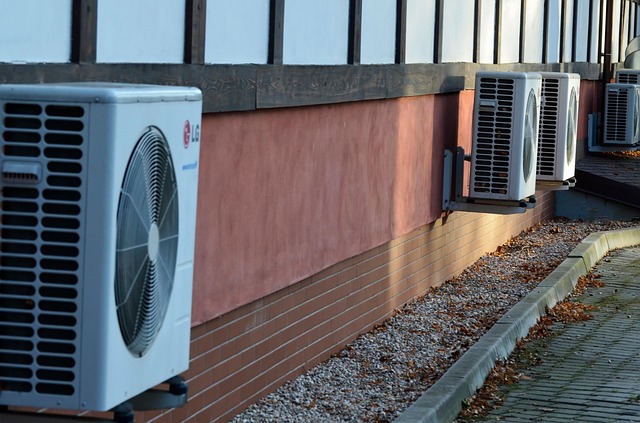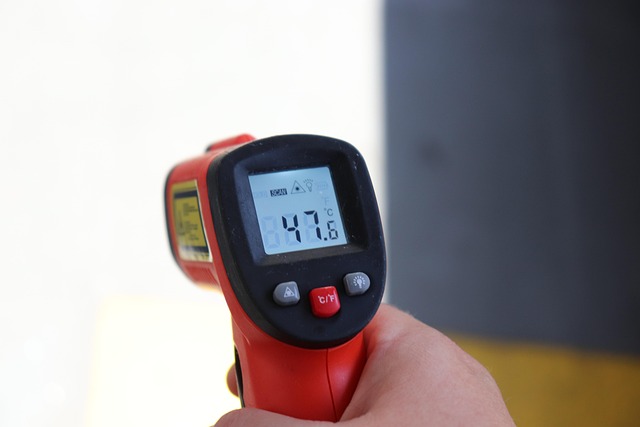Heating sensors maintain indoor comfort but can malfunction over time, leading to inefficient systems. Regular maintenance and prompt repairs by top-rated technicians are crucial for optimal performance. Replacing faulty sensors requires expert knowledge, thorough testing, and installation of suitable replacements. Post-repair, regular inspections and maintenance ensure energy efficiency and comfort, including smart thermostat installation and heat pump care.
Are you tired of an uncomfortable home due to faulty heating sensors? Understanding common issues and knowing who to trust is crucial. This guide explores the process of replacing these top-rated technicians to optimize your heating controls repair. From identifying sensor problems to maintaining efficient systems post-repair, we cover it all. Learn how expert technicians navigate complex repairs, ensuring your home stays cozy and efficiently heated.
- Understanding Common Heating Sensor Issues
- Choosing Top-Rated Technicians for Repairs
- The Process of Replacing Faulty Sensors
- Maintaining Optimal Heating Controls After Repair
Understanding Common Heating Sensor Issues

Heating sensors are integral to maintaining comfortable indoor temperatures, but they can develop issues over time, leading to inefficient heating systems. Common problems include faulty temperature readings, incorrect signal transmission, or failure to respond to thermostat settings. These issues may manifest as uneven heating across rooms, sudden temperature drops, or a lack of response from the heating system when activated.
Proper maintenance and timely repairs are crucial for optimal heating controls. Homeowners should be vigilant about regular check-ups, especially in older systems. If you notice any unusual behavior, such as a persistent ‘leaky’ radiator (indicating inadequate heat distribution), it’s advisable to consult a professional technician. They can perform tasks like adjusting radiator valves and diagnosing gas furnace troubleshooting problems to ensure your heating system functions at peak performance.
Choosing Top-Rated Technicians for Repairs

When it comes to replacing faulty heating sensors, enlisting the help of top-rated technicians is essential for ensuring accurate and efficient repairs. These professionals are equipped with the knowledge and expertise to diagnose complex issues related to heating controls repair. One key aspect in selecting the right technicians is verifying their thermostat compatibility checklist, as this ensures that the replacement parts will seamlessly integrate with your existing system.
Moreover, top-rated technicians can address a range of common problems such as ac heating not working or heat pump freezing up. They understand the intricacies of modern heating systems and can provide solutions tailored to your specific needs. By choosing skilled repairs, you can rest assured that your heating system will function optimally, creating a comfortable indoor environment all year round.
The Process of Replacing Faulty Sensors

Replacing faulty sensors is a precise process that requires expert knowledge and skill. Top-rated technicians begin by identifying the problem area, often through symptoms like uneven heating or inefficient system performance. They then carefully remove the old sensor, taking note of its placement and any associated components for future reference.
Next, the technician selects a replacement sensor suitable for the specific heating controls system, whether it’s a boiler repair, electric heating element repair, or radiator valve adjustment. After installing the new sensor, they conduct thorough testing to ensure accurate readings and proper functionality. This may involve checking connections, calibrating the sensor, and verifying signal transmission to the control unit. Once validated, the technician ensures all parts are secured and any access panels reinstalled, leaving the system ready for optimal performance.
Maintaining Optimal Heating Controls After Repair

Maintaining optimal heating controls after repair is paramount to ensuring your home stays comfortable and energy-efficient. Once top-rated technicians have replaced faulty sensors, it’s crucial to regularly inspect and maintain these new components. A smart thermostat installation can significantly enhance this process by automatically adjusting temperatures based on occupancy and time of day, further optimizing energy usage. Regular electric boiler maintenance is also essential; cleaning and checking for leaks not only extends the lifespan of your system but also ensures consistent heating performance.
Additionally, addressing any issues with heat pump defrosters promptly is vital. These devices prevent ice buildup, ensuring efficient heat transfer. Proper care includes periodic checks to ensure they operate smoothly during cold spells. By combining these practices with professional repairs, you can maximize the benefits of your heating controls repair, creating a more comfortable and sustainable living environment.
When dealing with faulty heating sensors, prompt action is key to maintaining comfortable indoor temperatures. By understanding common issues and choosing top-rated technicians for repairs, you can ensure a smooth replacement process. Following the expert guidance and ensuring proper maintenance afterwards will optimize your heating controls, providing efficient and reliable warmth for years to come. Remember, regular care and timely repairs are essential for a comfortable and energy-efficient home environment.
